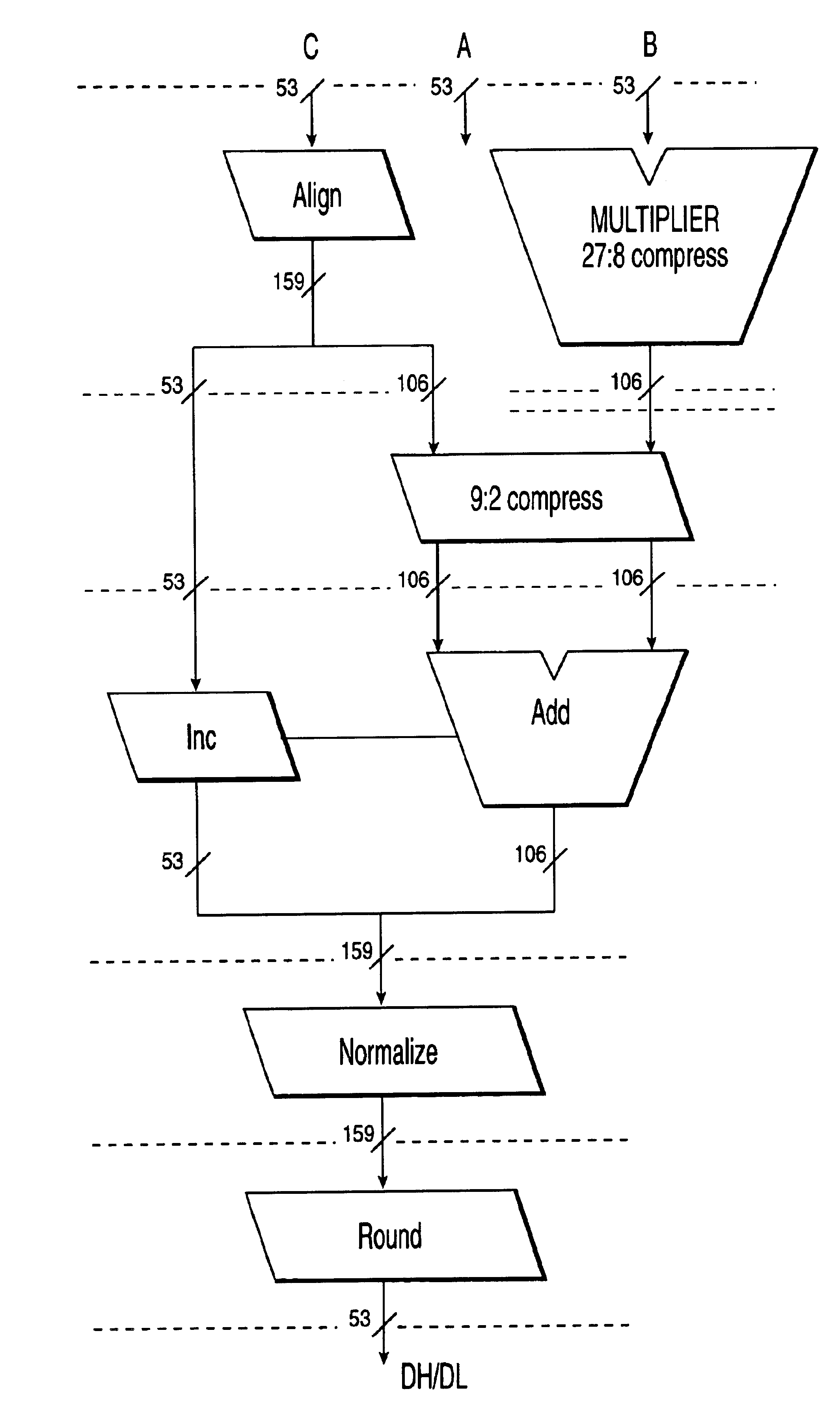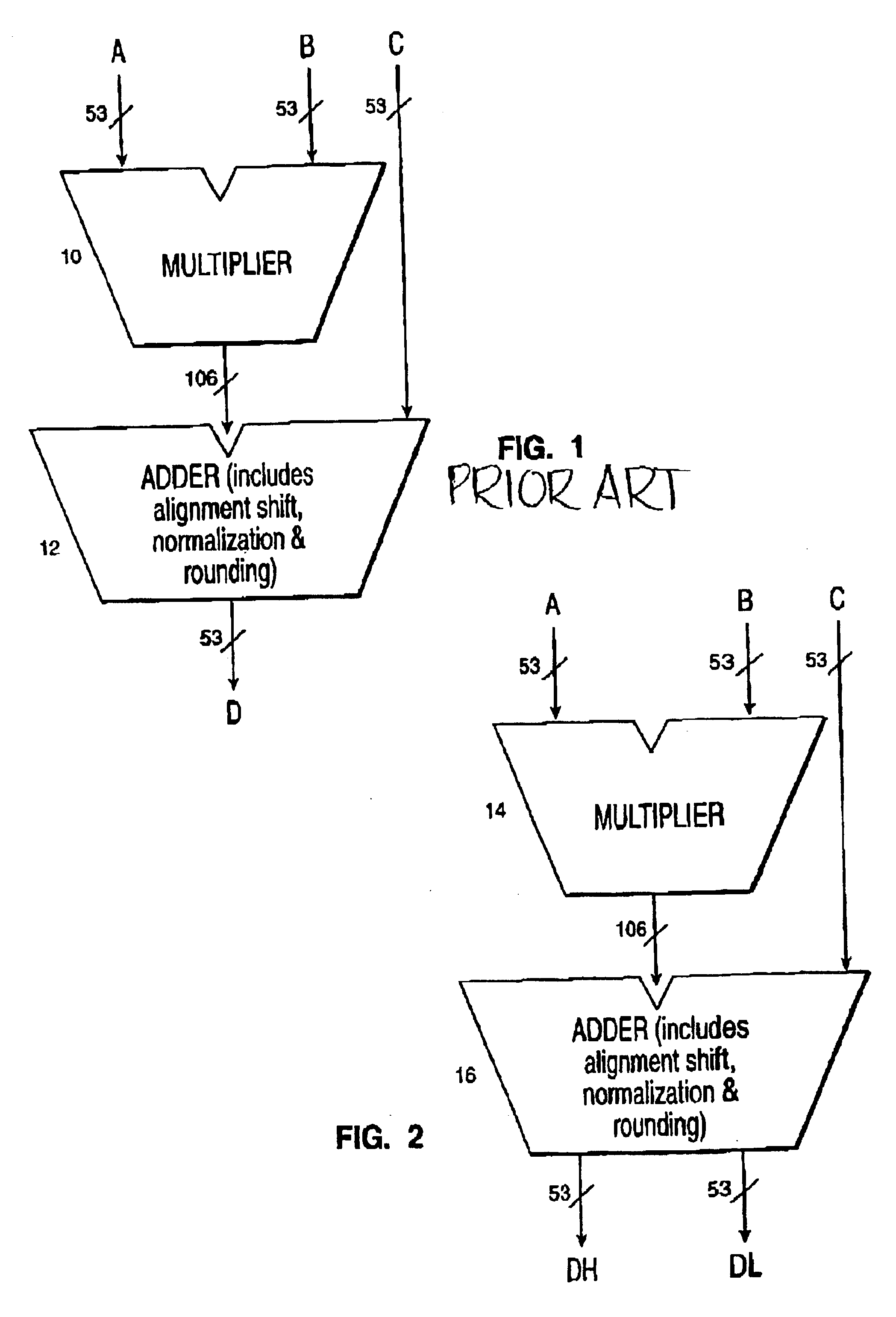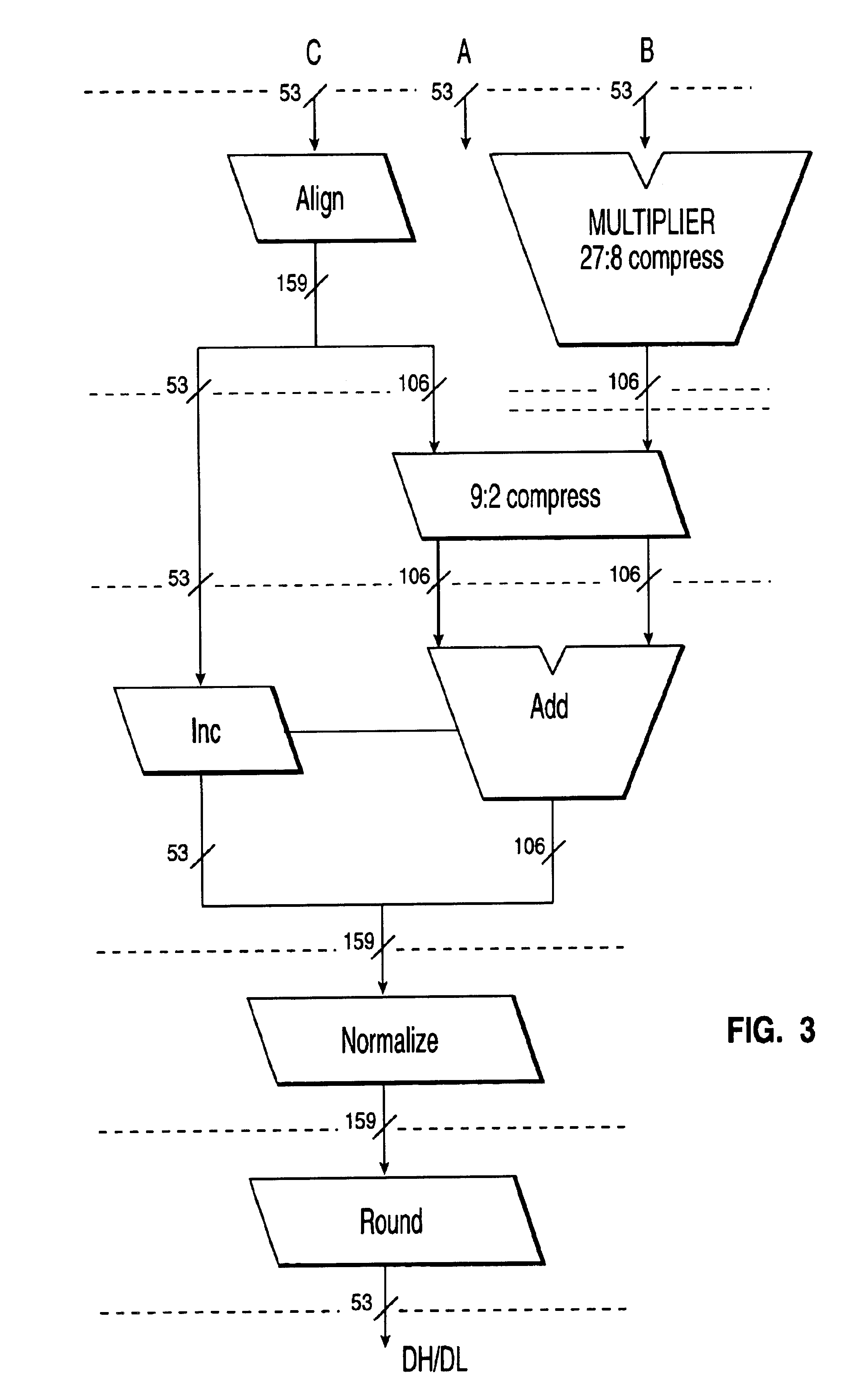Processor design for extended-precision arithmetic
a technology of extended-precision arithmetic and processors, applied in computing, computation using denominational number representations, instruments, etc., can solve the problems of insufficient double-precision floating point representations for all applications, unacceptably inaccurate, and insufficient arithmetic calculations, so as to achieve efficient extended-precision arithmetic
- Summary
- Abstract
- Description
- Claims
- Application Information
AI Technical Summary
Benefits of technology
Problems solved by technology
Method used
Image
Examples
Embodiment Construction
The processor of the preferred embodiment is used to carry out a space- and time-efficient technique for performing floating-point arithmetic operations using an extended-precision numerical representation. The processor and the technique used on the processor use a canonical representation having multiple double-precision fields to represent an extended-precision floating-point number. The preferred embodiment computes an extended-precision number (ch,cl) which is the unevaluated sum of two double-precision numbers ch and cl whose fraction bits (mantissas) do not overlap. The extended-precision number (ch,cl) is defined such that the value of the extended-precision number is equal to the exact (i.e., performed with real arithmetic) sum of the two double precision numbers ch and cl. For each (ch,cl), the result of the IEEE arithmetic sum fl(ch+cl) is identically equal to ch. In other words, the absolute value of cl is too small to make a difference when added to ch according to the ...
PUM
 Login to View More
Login to View More Abstract
Description
Claims
Application Information
 Login to View More
Login to View More - R&D
- Intellectual Property
- Life Sciences
- Materials
- Tech Scout
- Unparalleled Data Quality
- Higher Quality Content
- 60% Fewer Hallucinations
Browse by: Latest US Patents, China's latest patents, Technical Efficacy Thesaurus, Application Domain, Technology Topic, Popular Technical Reports.
© 2025 PatSnap. All rights reserved.Legal|Privacy policy|Modern Slavery Act Transparency Statement|Sitemap|About US| Contact US: help@patsnap.com



